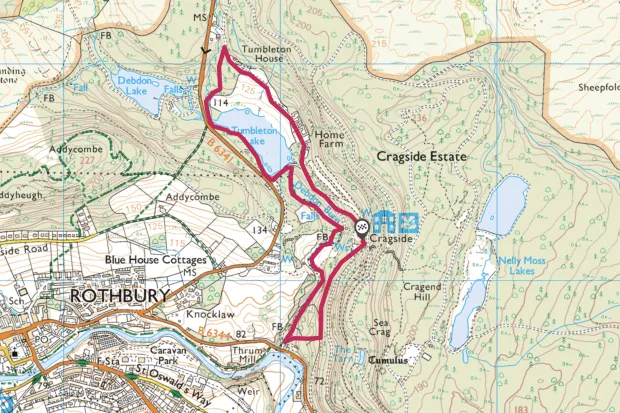A grand water-powered mansion, built by a vastly wealthy and eccentric Victorian inventor, cloaked in dense woodland dotted with follies, grottos and burbling brooks.
It sounds a place conjured in a work of fiction, but Cragside does indeed exist, in the wilds of Northumberland.
The house is the first home in the world to be powered by hydroelectricity, at the design of Lord Armstrong, an engineer and industrialist known as “the Magician of the North”. The founder of the Elswick works on the Tyne, Armstrong (1810-1900) manufactured ships, hydraulic cranes and weapons. This vastly wealthy self-made man threw all the opulence he could at Cragside – and this lavishly decorated mock Tudor mansion became the most technologically advanced house of its era. Sitting atop a rugged hill, it is surrounded by its remarkable grounds, in which Armstrong had five lakes constructed – and seven million trees and shrubs planted.
On this walk, look out for Douglas fir, western hemlock, giant sequoia – some towering above 50m – along with beech, Norway spruce, pedunculate oak, Norway maple, Scots pine, larch, common lime and silver birch, creating a majestic riot of autumn colour. It’s a true woodland wonder.

Cragside walk
2.4 miles/3.9km | 1.5 hours | easy | 108m ascent
1. Carriage Drive
From Cragside house, head north-west past the car park and follow the path towards the NT visitor centre, taking the right-hand route, Carriage Drive, along the eastern side of Tumbleton Lake. Walk uphill past the visitor centre on your right, where you can enjoy a fine cream tea (no, it’s not too early).

2. Tumbleton Lake
After passing some cottages on your right, turn left on to the gravel track of Lady’s Walk to head south through autumn woods. Cross Debdon Bridge and continue along the western bank of Tumbleton Lake on the boardwalk, before following the lake around to the left.
3. Debdon Burn
Take the steps on the right down towards the Pump House, which supplied the house with the water by pumping it up to a reservoir 200 feet above the house. This stored water was fed into the house by gravity to power the hydraulic lift, kitchen spit and laundry equipment.
Follow the Armstrong Trail, which wends back and forth along burbling Debdon Burn. Take the stone steps on the left to gain access across the splendid iron bridge. At the other end of the bridge, take the steps beneath the bridge towards the Pinetum, which is thick with conifers. Cross a wooden bridge and follow the trail. Where the path forks, turn right to continue through the Pinetum. Keep an eye out for red squirrels tumbling through the treetops, and gnarled wood spirit Douglas, a sculpture carved into a fallen Douglas fir.

4. Power House
Turn right to cross over the ivy bridge and continue along the path towards the Power House.
From the Power House, head east to reach a main track – here turn left and return to the house. Admire its extraordinary artworks and the technological novelties of the era, such as a telephone and a passenger lift, before exploring the grottos, rock gardens and clock tower. Both ahead of its time and out of this world, Cragside is magical.
Cragside map
Cragside walking route and map

